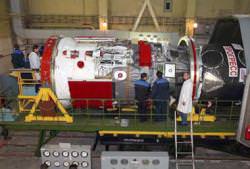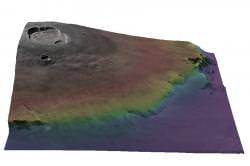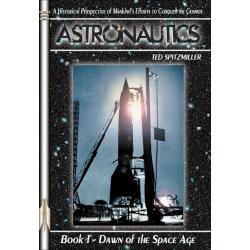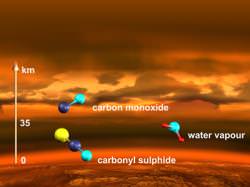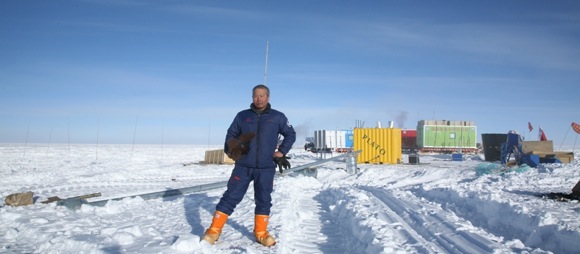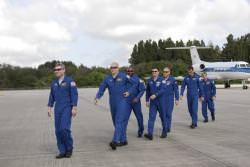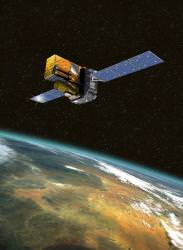Who would not be chastened at the impish pleasures shown by Icharus. He let his vision beguile him ever higher until the environment of space ruined his aspirations. Perhaps this was the beginning of humankind’s venture into space, it just took awhile to bear fruit. Nevertheless, most people begin our space age with the successful launch of Sputnik. Ted Spitzmiller uses this event to begin his two volume book-set, Astronautics – A Historical Perspective of Mankind’s Efforts to Conquer the Cosmos. Within it, he chronicles 50 years of the technical progress that put reality into so many dreams of yesteryears.
Astronautics refers to events of human derivation that occur at greater than 100 kilometres above the Earth’s surface. People, rockets, probes, missiles, debris have all achieved this arbitrary yet wondrous height. For at that lofty elevation, the Earth’s gravity becomes less an issue while the harsh and empty vastness of the remainder of space prevails upon the senses. Yet, our space age began as a technical race and has remained fairly solidly ensconced in the domain of the technophile. Passion could not raise a rocket off Earth, but liquid hydrogen, bell shaped thrust chambers and turbo pumps could. Such a technical bent thus accompanies any perspective of humankind and space.
Spiztmiller’s books do cover the 50 years of humankind in space. And, they do so from the direct perspective favoured by the technically inclined. For within the books, loads of facts and figures draw the reader ever further into rocketry, its difficulties and its achievements. And, being an historical perspective, there’s no surprises. Book 1 provides the standard, brief accolade to the early visionaries such as Jules Verne, Tsiolkovsky and Goddard. Then, it leaps to the European practitioners, particularly, Von Braun and the German war effort. This flows into the space race and the book ends with the USA vainly trying to catch up via the Mercury program. Book 2 picks right up from there, continuing on with the race, then transitioning through Skylab and into the era of the Space Shuttle and the International Space Station. It wraps up with brief chapters on envisioned expendable launchers and Hubble replacements. Its been a busy 50 years and Spitzmiller’s book describes much of it.
As well as following the common route of space development, Spitzmiller includes some perhaps lesser known endeavours. For example, the Convair MX-774 and the French Veronique get mention. But, the focus remains on the well known, principally USA programs. And for each program, the books follow a standard pattern. A brief historical view relays the program’s purpose, political or social impacts get mentioned, technical novelties and equipment specifications follow in a list, and, last, the program’s achievements get summarized. With this, there’s little need of an author’s added value and nearly none is present. Being mostly a regurgitation of facts, these two books skip from one program to the next. The books’ chapters each describe a significant step along our space journey. The chapter’s contents are chronologically ordered and the chapters themselves are roughly chronological in order however a particular event or program may re-occur multiple times. Its been a busy time and these books well show the many advances we’ve achieved along the way.
There’s no surprise that a historical perspective of 50 years of humankind’s space history needs more than one volume. Actually, tens of volumes might still be inadequate. Hence, Spitzmiller acknowledges that his books attempt to simplify and clarify technology so as not to overwhelm the reader. And while he does achieve a reasonable balance between detail and readability, the balance also defines the audience likely to benefit. Specialist and space aficionados will find little or nothing new. Those just starting to look for an historical basis for our current space capability will find clearly delineated chapters and plenty of detail in these two books. And, though the astronautics theme is broad enough, Spitzmiller extends it further. He includes the effects of patents, the problems with bureaucracy, the impact of politics and slightly related quips such as the origination of the bionic man. Interesting it certainly is, but perhaps a little too broad in scope.
Most puzzling in these books is the lack of illustrations. A paltry quantity of pictures and sketches accompany innumerable paragraphs that include data and numbers. This may leave the reader with the feeling that spreadsheets or data tables somehow fell through a word grinder and ended up as paragraphs. For those who prefer reading data in this format, these books will be a pleasure. Others, however may find themselves skipping long expanses. In a different format, these books might have been condensible into one practical volume.
As well, Spitzmiller has fallen into the trap of being a lazy historian. That is, he compiles the information but doesn’t draw from it. After over four hundred and seventy pages of data, he provides two pages on what this might portray for the future. His consideration of the impact and value of astronautics to humankind is sorely lacking. Further, using a subtitle claiming that efforts are ‘to conquer the cosmos’ makes for a nice image but a less than accurate reflection of humankind’s efforts or the books contents. Thus, these volumes make for a ready reference for the hobbyist or general enthusiast who want encouragement that humankind can accomplish greatness, if they have the will.
Having a dream separates the visionaries from the masses. Humankind’s advances have relied upon these people with great foresight who picture a better future and then make it happen. Thus, humankind has blossomed from simple agrarians to flyers in space. Ted Spitzmiller’s two volume book-set entitled, Astronautics – A Historical Perspective of Mankind’s Efforts to Conquer the Cosmos recounts fifty years, 1957 to 2007, during which humankind began placing objects into space and living a dream that extends beyond the surface of Earth.
Read more reviews or purchase a copy online from Amazon.com

